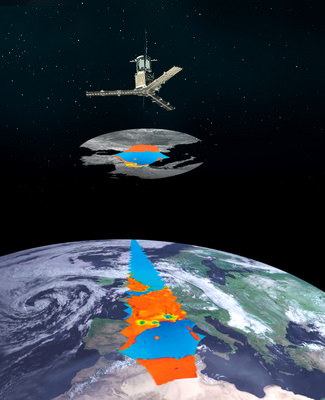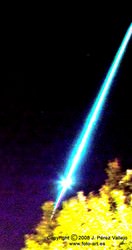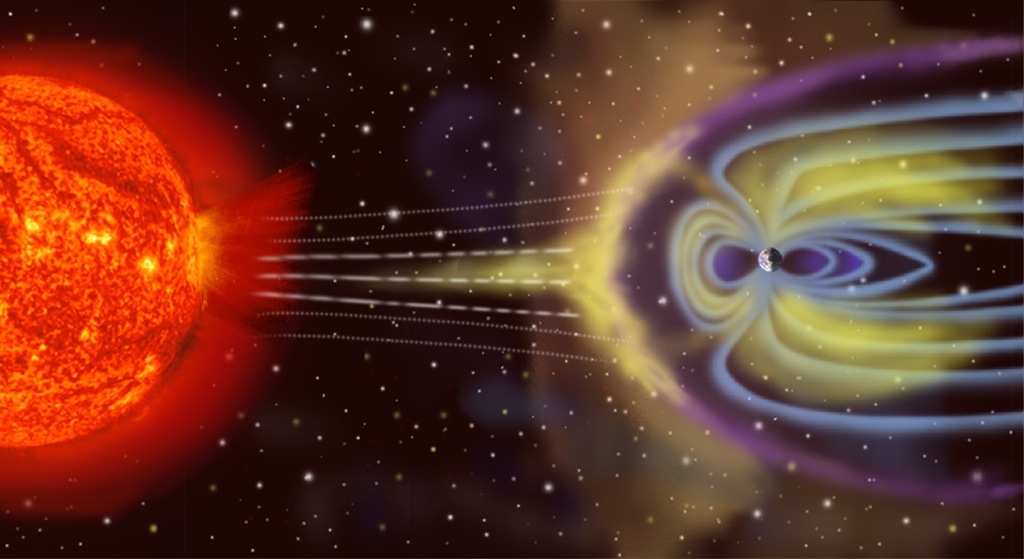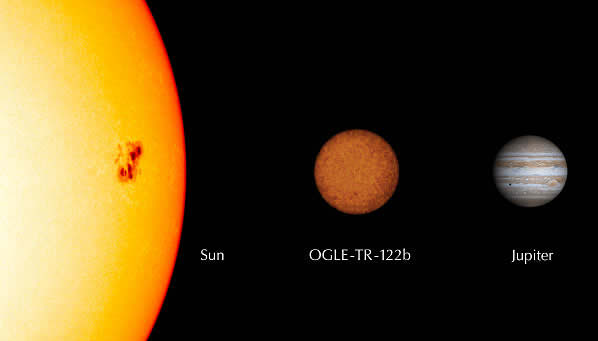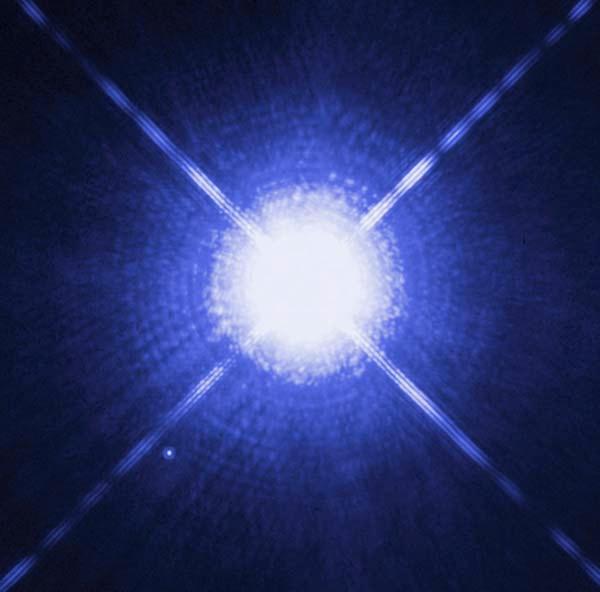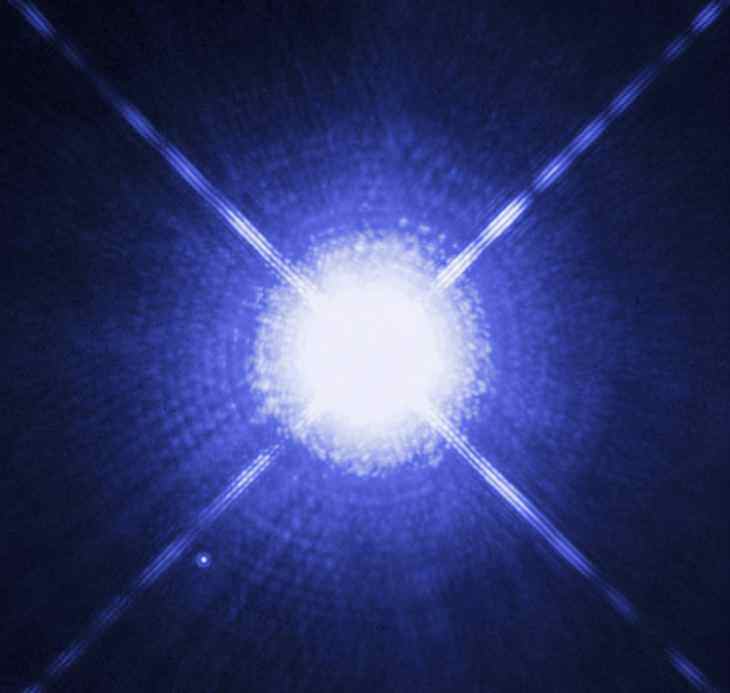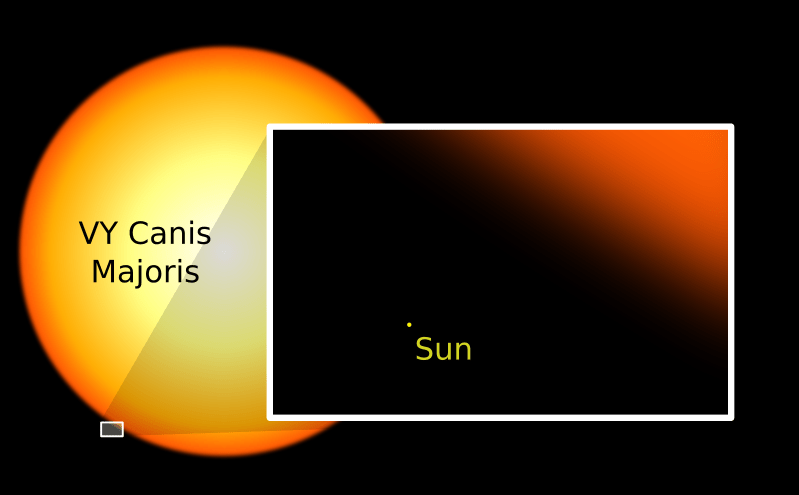Greetings, fellow SkyWatchers! With the Moon gone from the early evening skies and the weather beginning to warm for northern climes, isn’t it about time you at least took a pair of binoculars out and scanned the skies with me? Some of mankind’s greatest astronomers were born over the next three days, included J.L.E. Dreyer, Fritz Zwicky, William Pickering and Galileo Galilei! Although our weekend targets are simple and you’ve probably already seen them before – how long has it been since you’ve last looked? Or tried with alternative sized optics? Ah… Yes. You begin to see the light! Come on. Dust those old binoculars off and head out into the back yard. I’ll be waiting…
 Friday, February 13, 2009 – A bad luck day? Not hardly. It was rather fortunate, because Johan Ludvig Emil Dreyer, was born on this date in 1852. At age 30, Danish astronomer Dreyer became director of the Armagh Observatory—not a grand honor, considering the observatory was so broke it couldn’t afford to replace its equipment. Like all good directors, Dreyer somehow managed to get a new 10″ refractor but no funds for an assistant to practice traditional astronomy. However, J.L.E. was dedicated and within 6 years had compiled all observations known to him into one unified work called the New General Catalogue of Nebulae and Clusters of Stars (NGC). Originally containing 7,840 objects, and supplemented in 1895 and 1908 with another 5,386 designations, the NGC remains the standard reference catalog. Although Dreyer’s personal observations included such nebulous descriptions as ‘‘a vault of stars,’’ modern astronomers continue to use his abbreviations as a kind of shorthand.
Friday, February 13, 2009 – A bad luck day? Not hardly. It was rather fortunate, because Johan Ludvig Emil Dreyer, was born on this date in 1852. At age 30, Danish astronomer Dreyer became director of the Armagh Observatory—not a grand honor, considering the observatory was so broke it couldn’t afford to replace its equipment. Like all good directors, Dreyer somehow managed to get a new 10″ refractor but no funds for an assistant to practice traditional astronomy. However, J.L.E. was dedicated and within 6 years had compiled all observations known to him into one unified work called the New General Catalogue of Nebulae and Clusters of Stars (NGC). Originally containing 7,840 objects, and supplemented in 1895 and 1908 with another 5,386 designations, the NGC remains the standard reference catalog. Although Dreyer’s personal observations included such nebulous descriptions as ‘‘a vault of stars,’’ modern astronomers continue to use his abbreviations as a kind of shorthand.
Honor Dreyer tonight by discovering one of his catalog objects suited for all optics – NGC2287.
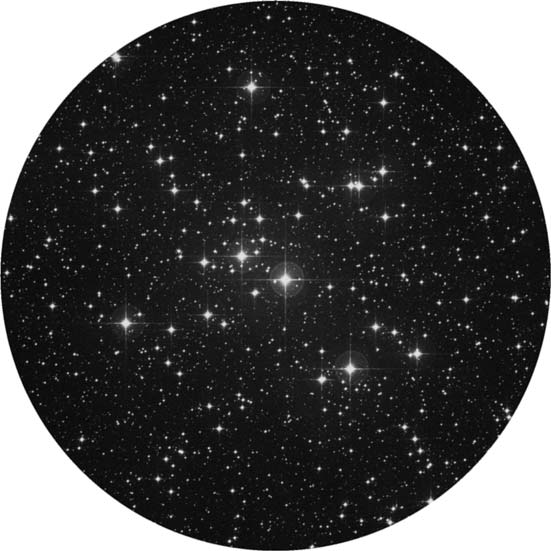
Located about two finger-widths south of Alpha Canis Majoris (RA 06 46 00 Dec -20 46 00), only an open cluster this bright could stand up against brilliant Sirius. From a dark-sky location, your unaided eye can even spot this magnitude 4.5 “star vault” as a hazy patch. Aristotle saw it as early as 325 BC! Officially discovered by Hodierna, we know it best by the designation Messier Object 41. Even from 2,300 light-years away, the cluster’s brightest star, an orange giant, stands out clearly from the stellar nest. With large aperture, you’ll notice other K-type stars, all very similar to Sol. Although small scopes and binoculars won’t reveal too much color, you might pick up on the blue signature of young, hot stars. NGC 2287 could be anywhere from 190 to 240 million years old, but its stars shine as brightly now as they did in Aristotle’s day. . .and Dreyer’s!
Saturday, February 14, 2009 – Happy Valentine’s Day! On this date in 1747, astronomer James Bradley presented his evidence of Earth’s wobble, called nutation. The study took 19 years, but won Bradley the Copley Medal! In 1827, George Clark was born. The name might not ring a bell, but it was indeed a bell—melted down—that he used to create his first brass telescope. George’s family went on to produce the finest—and largest—telescopes of their time.
 In 1898 crabby astronomer Fritz Zwicky came along, his name synonymous with the theory of supernovae. The Swiss-born Caltech professor was also a salty character, often intimidating his colleague Walter Baade and referring to others as ‘‘spherical bastards.’’ Although Zwicky was difficult to work with, he was also brilliant—predicting the phenomenon of gravitational lensing.
In 1898 crabby astronomer Fritz Zwicky came along, his name synonymous with the theory of supernovae. The Swiss-born Caltech professor was also a salty character, often intimidating his colleague Walter Baade and referring to others as ‘‘spherical bastards.’’ Although Zwicky was difficult to work with, he was also brilliant—predicting the phenomenon of gravitational lensing.
Tonight we’ll look at a supernova remnant as we venture to the Crab Nebula. Finding M1 is easy: it can be seen with as little as 7X magnification. Locate Zeta Tauri (about halfway between Orion’s ‘‘head’’ and the southernmost bright star in Auriga) and aim about 1 degree northwest (RA 05 34 31 Dec -22 00 52).
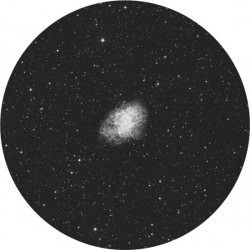 Viewing M1 with small optics helps to understand why Charles Messier decided to compile his famous catalog. Unaware of its earlier discovery, Messier located a fuzzy object near the ecliptic and assumed it was the return of Halley’s Comet. Considering his primitive telescope, we can’t fault his observation. But Chuck was a good astronomer. When he realized the object wasn’t in motion, he began compiling a log of things not to be confused with comets—the famous Messier objects. Enjoy looking at this spectacular deep-sky jewel, and we’ll study it in depth another time. Of course, Zwicky would have cursed me for saying that observing without science is an ‘‘empty brain exercise and therefore a waste of time.’’ But on the date of his birth, I took his advice. . . ‘‘Give me a topic and I’ll give you an idea!’’
Viewing M1 with small optics helps to understand why Charles Messier decided to compile his famous catalog. Unaware of its earlier discovery, Messier located a fuzzy object near the ecliptic and assumed it was the return of Halley’s Comet. Considering his primitive telescope, we can’t fault his observation. But Chuck was a good astronomer. When he realized the object wasn’t in motion, he began compiling a log of things not to be confused with comets—the famous Messier objects. Enjoy looking at this spectacular deep-sky jewel, and we’ll study it in depth another time. Of course, Zwicky would have cursed me for saying that observing without science is an ‘‘empty brain exercise and therefore a waste of time.’’ But on the date of his birth, I took his advice. . . ‘‘Give me a topic and I’ll give you an idea!’’
 Sunday, February 15, 2009 – Are you ready to do a little IYA 2009 outreach? Then start now. This date’s astronomical births begin in 1564 with Galileo Galilei—pioneer of physics and astronomy—who didn’t invent the telescope but certainly perfected it. Arrested for heresy, Galileo entreated fellow scientists to discover the universal truths for themselves. His cry was ignored. To his friend, Johannes, he wrote: ‘‘I wish, my dear Kepler, that we could have a good laugh together at the extraordinary stupidity of the mob. What do you think of the foremost philosophers of this University? In spite of my oft-repeated efforts and invitations, they have refused, with the obstinacy of a glutted adder, to look at the planets or Moon or my telescope.’’
Sunday, February 15, 2009 – Are you ready to do a little IYA 2009 outreach? Then start now. This date’s astronomical births begin in 1564 with Galileo Galilei—pioneer of physics and astronomy—who didn’t invent the telescope but certainly perfected it. Arrested for heresy, Galileo entreated fellow scientists to discover the universal truths for themselves. His cry was ignored. To his friend, Johannes, he wrote: ‘‘I wish, my dear Kepler, that we could have a good laugh together at the extraordinary stupidity of the mob. What do you think of the foremost philosophers of this University? In spite of my oft-repeated efforts and invitations, they have refused, with the obstinacy of a glutted adder, to look at the planets or Moon or my telescope.’’
The birth of lunar and planetary observer William Pickering followed in 1858. During Pickering’s professional years at Harvard, he noted that the entire constellation of Orion is encased in faint nebulosity. Later verified by E.E. Barnard, this nebula is now known as Barnard’s Loop.
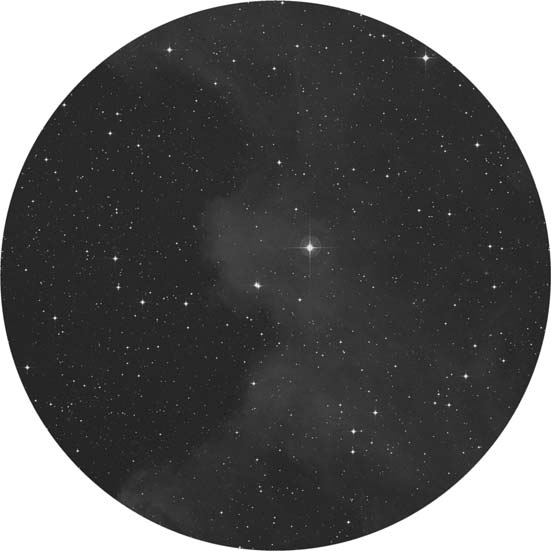
With a very dark sky and excellent transparency, you can trace the ‘‘Loop’’ with binoculars. The area is so large and it’s pointless to provide coordinates, but the brightest portion extends eastward between Alpha and Kappa. Because the Orion complex contains so many rapidly evolving stars, it stands to reason a supernova has occurred there. Barnard’s Loop is probably the ancient shell leftover from such a cataclysmic event. If taken as a whole, it would encompass 10 degrees of sky! More difficult for Northern Hemisphere viewers is IC 2118, a huge reflection nebula west of Rigel known as the ‘‘Witch Head.’’ Once photographed by Pickering, IC 2118 is more sensitive to film than to the eye,
but that doesn’t mean you can’t see it. Sky conditions are the decisive factor, so look closely around the eastern edge where the fueling stars are brightest. You just might surprise yourself!
Until next week? Dreams really do come true when you keep on reaching for the stars!
This week’s awesome photos are: J.L.E. Dreyer (historical image), NGC 2287: M41 (credit—Palomar Observatory, courtesy of Caltech), Fritz Zwicky (historical image), Messier Object 1 (credit—Palomar Observatory, courtesy of Caltech), Galileo (historical image) and Eastern edge of IC 2118 (credit—Palomar Observatory, courtesy of Caltech).

